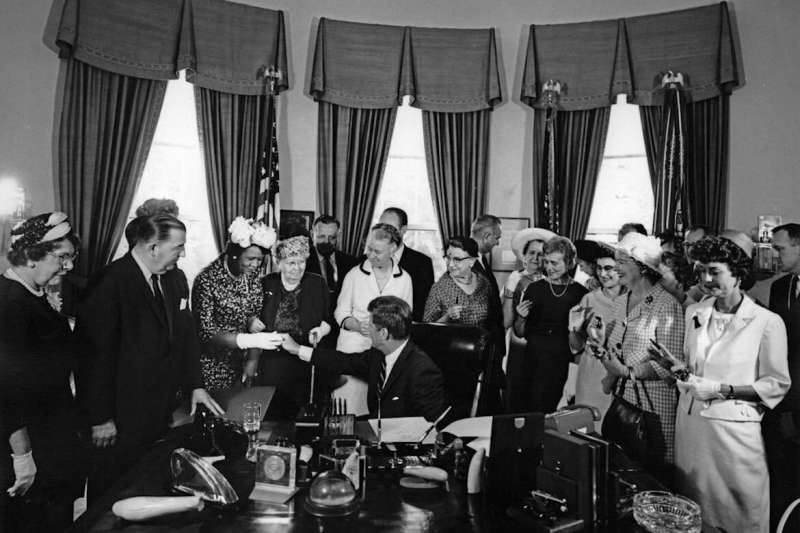This article has been reviewed according to Science X's editorial process and policies. Editors have highlighted the following attributes while ensuring the content's credibility:
fact-checked
trusted source
proofread
Anti-discrimination laws in 1960s to increase wages for women may have been more effective than previously thought

Two pieces of landmark federal legislation intended to lessen the gender pay gap have long been deemed by many scholars to have been ineffectual. Despite the passage of the 1963 Equal Pay Act, signed into law 60 years ago on June 10, and Title VII of the 1964 Civil Rights Act—mandating equal pay for equal work and prohibiting employment discrimination against women—median salaries were thought to have maintained a persistent gender pay gap through the 1980s.
But now, economic researchers, in a new working paper published by the National Bureau of Economic Research, bring positive news, according to Martha Bailey, UCLA professor of economics and the paper's lead author. The research found that an examination of more granular data shows that the gender gap decreased between the 1960s and 1980s in certain states and certain jobs.
Between 1964 and 1968, wages for women increased an average of 11% and by more in lower wage jobs. In addition, the U.S. Department of Labor's enforcement and awarding of back pay motivated some employers to do away with wage discrimination in contracts and negotiations.
"There's been a longstanding concern that these laws did not change practice on the ground," Bailey said. "But one thing we've learned from this research is that legislation, mixed with strong enforcement, did a lot to narrow pay gaps."
Bailey says that one of the difficulties in evaluating the effectiveness of the laws has been that federal legislation applies across the entire U.S. at one time. But given that economies, labor markets and policies change in every state, many different factors contribute to maintaining persistent gaps. Research was needed to discover where gains occurred and where they did not.
Enforcement of Title VII of the Civil Rights Act came in 1971, with the landmark Supreme Court case Phillips v. Martin Marrietta Corp., which deemed it illegal to not hire women with school-aged children if a man with school-aged children could be hired. The following year, the Equal Employment Opportunity Act of 1972 gave the Equal Employment Opportunity Commission the authority to pursue independent lawsuits and expanded Title VII's coverage. With strengthened enforcement, firms changed hiring practices in a number of fields, including newspapers, which coincidentally had continued to print sex-segregated help-wanted ads through the 1970s.
The research found that wage gains for women were in jobs where wages were below the 50th percentile. Some of the most significant increases occurred in jobs such as department store clerk, food service worker and janitor.
Bailey says that in many of these lower paying jobs, it may have been easier to determine when a man and woman were doing precisely the same job and therefore judge the equality of work. This would have made enforcement easier, too, perhaps compelling employers to comply with the new laws.
"Overall, the research tells us that legislation coupled with enforcement was important for narrowing pay gaps," said Bailey. "However, it also tells a cautionary tale—that something that narrows pay gaps in the short term can increase pay gaps across jobs in the long run if firms respond by hiring or promoting fewer women."
More information: Martha Bailey et al, How the 1963 Equal Pay Act and 1964 Civil Rights Act Shaped the Gender Gap in Pay (2023). DOI: 10.3386/w31332
Provided by University of California, Los Angeles




















